Garmin has just announced their latest flagship Forerunner watch, the Forerunner 970. This watch takes many of the new smartwatch elements found on the Fenix 8 & Venu 3, and merges them with new sports features not previously found on any Garmin watch to date.
This includes elements like the addition of speaker & microphone for calls if your smartwatch is in range, adding in the much-desired LED flashlight, and new running metrics focused on running economy and projected race time & pace. Plus a host of new sports profiles/modes, the newer Garmin Elevate V5 optical heart rate sensor (with ECG), Evening Report, and plenty more.
In addition, Garmin has announced a new Garmin Forerunner 570 watch, which is the successor to the Forerunner 265. Yes, you read that right, Garmin’s Natalie Miller confirmed that the “Forerunner 570 is [the] successor to 265”. Further, Garmin also introduced a new chest strap, the HRM 600, which brings in additional running metrics, along with secured connections like the HRM 200 earlier this year. The HRM 600 is the successor to the HRM Pro series.
Note that this post isn’t a full in-depth review, but rather more of a first-look hands-on explaining all the new features. Expect an in-depth review of this and the other watches down the road. As usual, that’ll include how well these features work in real-life with hours upon hours of testing across numerous sports. With that, let’s get into it!
What’s New:

In this section, we’re gonna look at how it compares to the existing Forerunner 965. That watch is also AMOLED, as noted before, MIP is dead on the Forerunner series, so don’t be expecting any sort of MIP-based high-end Forerunner at this point. That’ll be reserved for the Instinct & Fenix variants.
So, digging into the key differences compared to the Forerunner 965:
– Titanium Case is a 47mm case with a 1.4” AMOLED touchscreen display (same as before)
– Increased display cover to Sapphire Crystal (from Corning Gorilla Glass 3 DX)
– Added Garmin Elevate Gen5 optical HR sensor (previous was Gen4)
– Added ECG (medically certified) & Skin Temperature Features
– Added speaker & microphone for calls (when connected to phone)
– Added LED flashlight (with both white & red LED’s)
– Watch slightly thinner than FR965 by 0.3mm
– Added Evening Report feature (new to Garmin entirely)
– Added Voice Commands feature
– Added Skin temperature feature
– Added Past Ovulation estimates feature (new to Garmin entirely)
– Added Running Tolerance feature (new to Garmin entirely)
– Added Impact Load Factor (new to Garmin entirely)
– Added Running Economy feature (new to Garmin entirely)
– Added Step Speed loss feature (new to Garmin entirely)
– Added ‘Autolap by timing gates’ feature (new to Garmin entirely)
– Added Suggested Finish line feature (new to Garmin entirely)
– Added project race time predictor feature (new to Garmin entirely)
– Added Garmin triathlon coach feature (new to Garmin entirely)
– Added previous Forerunner migration feature (will migrate old watch settings)
– Added Large Font size option
– Added Focus Modes (as seen on Fenix 8)
– Added new Multisport Structured Workouts (new to Garmin entirely)
– Added 15 new sport profiles (see list below)
– Added Multiple Battery Power Mode Customizations (previously just a single mode)
– Switched to 1-second recording as the default (finally!!!!)
– Improved mapping clarity (the map style design)
– Improved Garmin Coach adaptive training (show more details on watch)
– Tweaked user interface to somewhat match updated Fenix 8 UI (with a Forerunner 965 slant on it)
– Lots of changes to battery specs (mostly increases, some decreases, see below)
– Increases price to $749USD (from $599USD)
– Slightly higher at 56g (compared to 53g before)
Here’s the new sport profiles that are added:
Pool Triathlon, Brick, Rucking, Mobility, Adventure Race, Expedition, Obstacle Racing, Hunt, Fish, Horseback Riding, Fishing, Boat, Sail, Sail Race, Snorkel
When it comes to the battery specs, it’s a bit of a mixed bag. These are mostly increases, save the smartwatch mode & GPS-only modes. Here’s the table:
Smartwatch mode: Up to 15 days (965 was 23 days)
GPS-Only GNSS mode: Up to 26 hours (965 was 31 hours)
SatIQ (AutoSelect) GNSS mode: Up to 23 hours (965 was 22 hours)
All-Systems GNSS mode + Multi-Band: Up to 21 hours (965 was 19 hours)
GPS-Only GNSS mode with music: Up to 14 hours (965 was 10.5 hours)
SatIQ (AutoSelect) GNSS mode with music: Up to 13 hours (965 was 9.5 hours)
All-Systems GNSS mode + Multi-Band with music: Up to 12 hours (965 was 8.5 hours)
Got all that? Good. Let’s take a closer look at some of the newer features.
A Closer Look:

If you’ve got a Forerunner 965, here’s the new features you’ll notice, and a Quick Look at how they work. First up, is the restoration of your Forerunner 965 watch settings. It’ll offer to do this in the app, and then on the watch finishes up transferring all those over.
From there, you’ll notice the updated user interface. This essentially takes chunks of the sport mode UI from the Fenix 8 series, and applies a bit of a FR965 slant/flavor to it.
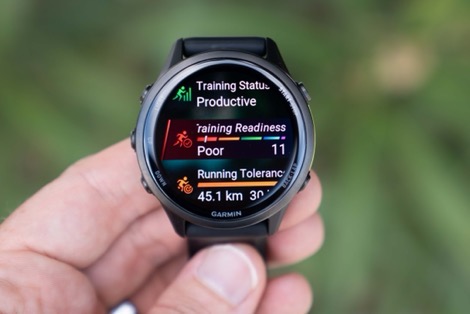
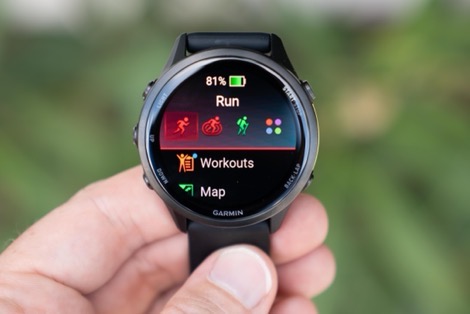

Meanwhile, before we get into those sport modes, if you flip the watch over, you’ve got the new Garmin Elevate Gen5 optical HR sensor. The main feature this adds is ECG support for approved countries (US, EU, and a boatload more), as a medical device.

Flipping the watch towards the forward, you’ll see the new LED flashlight. This became super popular on the Garmin Fenix & Instinct lineups, and has finally branched out beyond the Garmin Outdoor team watches, to the Forerunner 970. It’s by far my favorite hardware feature on recent watches.
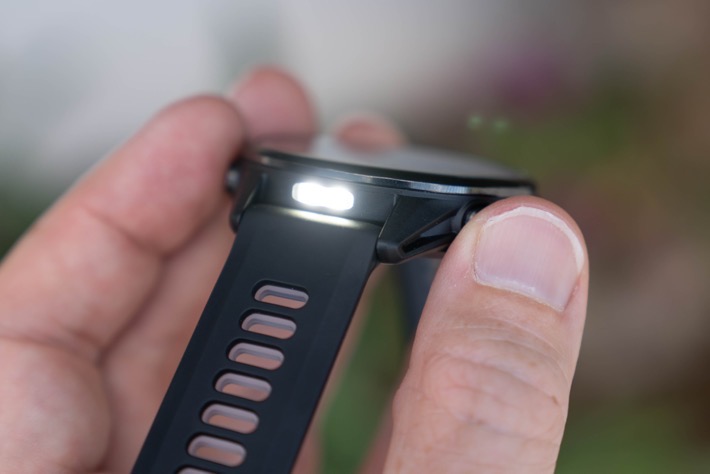
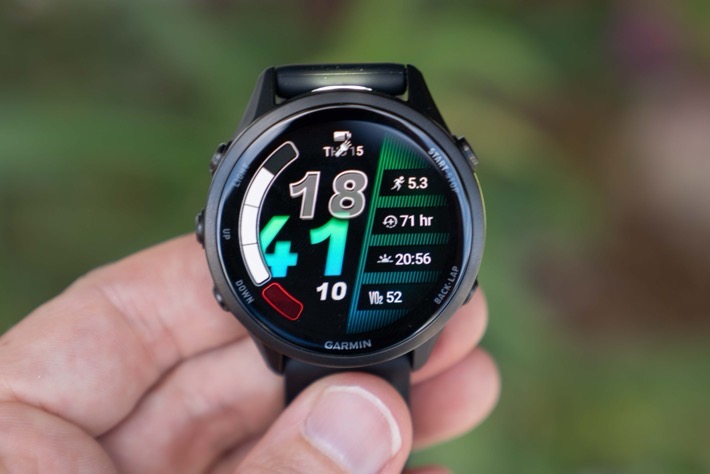
Next, getting into some of the new sports features, there’s the Running Tolerance feature, which is looking at your previous weekly mileage trends, and giving you some boundaries on what to run (to avoid injuries). This is kinda taking that old adage about adding no more than X amount of your previous weekly mileage. For example, it says my last 7 day’s mileage is a mere 39KM, and thus, I can do 45KM.

In my case, the last 4-5 weeks have been much more cycle-heavy, though, the winds shift very very quickly around these parts. Considering doing a marathon next week. TBD.
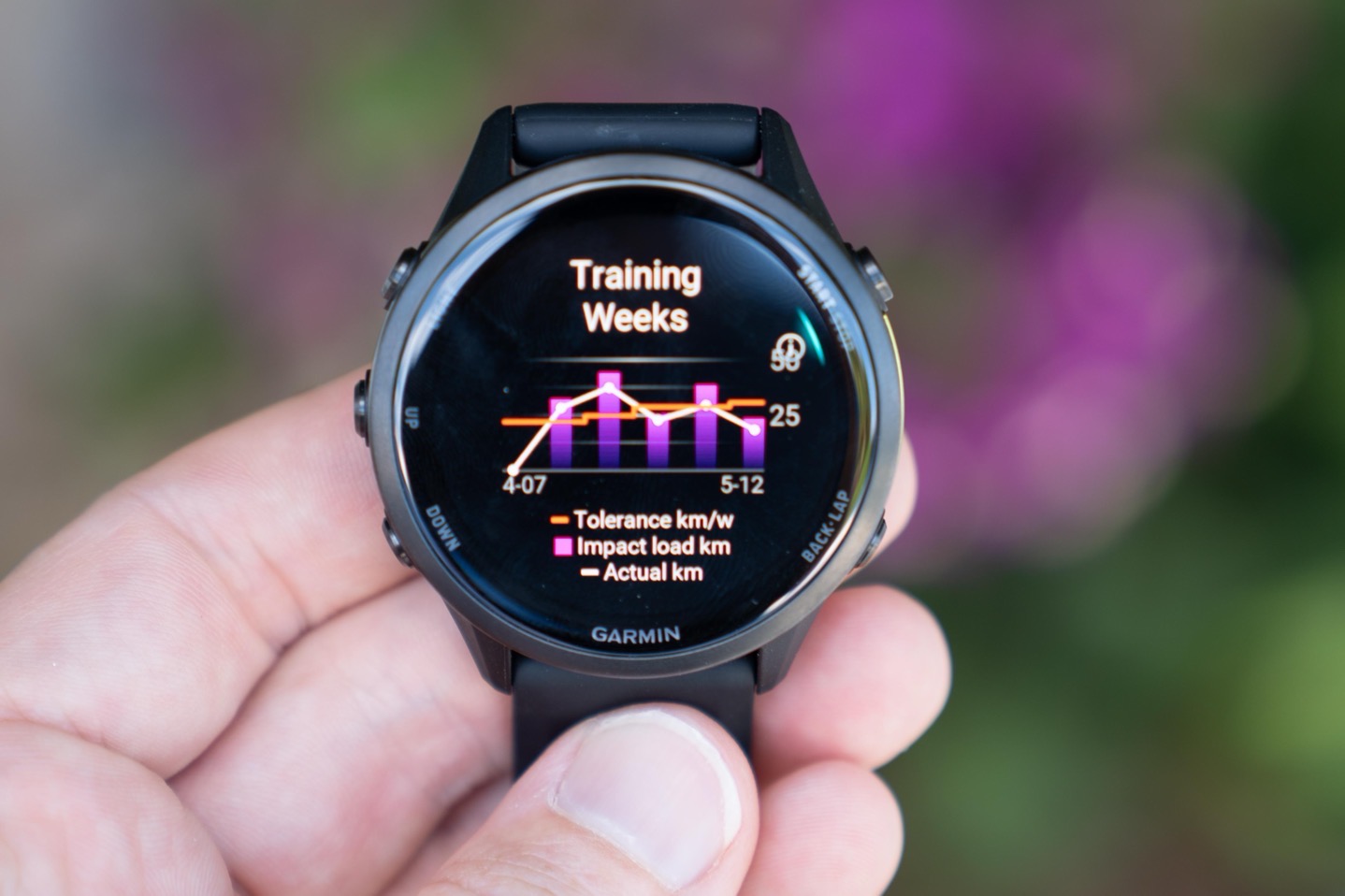
The next new feature is the Impact Load after each run. You’ll see how this would compare to a flat run, with the general conversion of hilly runs (like mine) emphasizing the impact of downhill sections. So this 5.3KM run was equivalent to a 7.2KM run on a flat course.
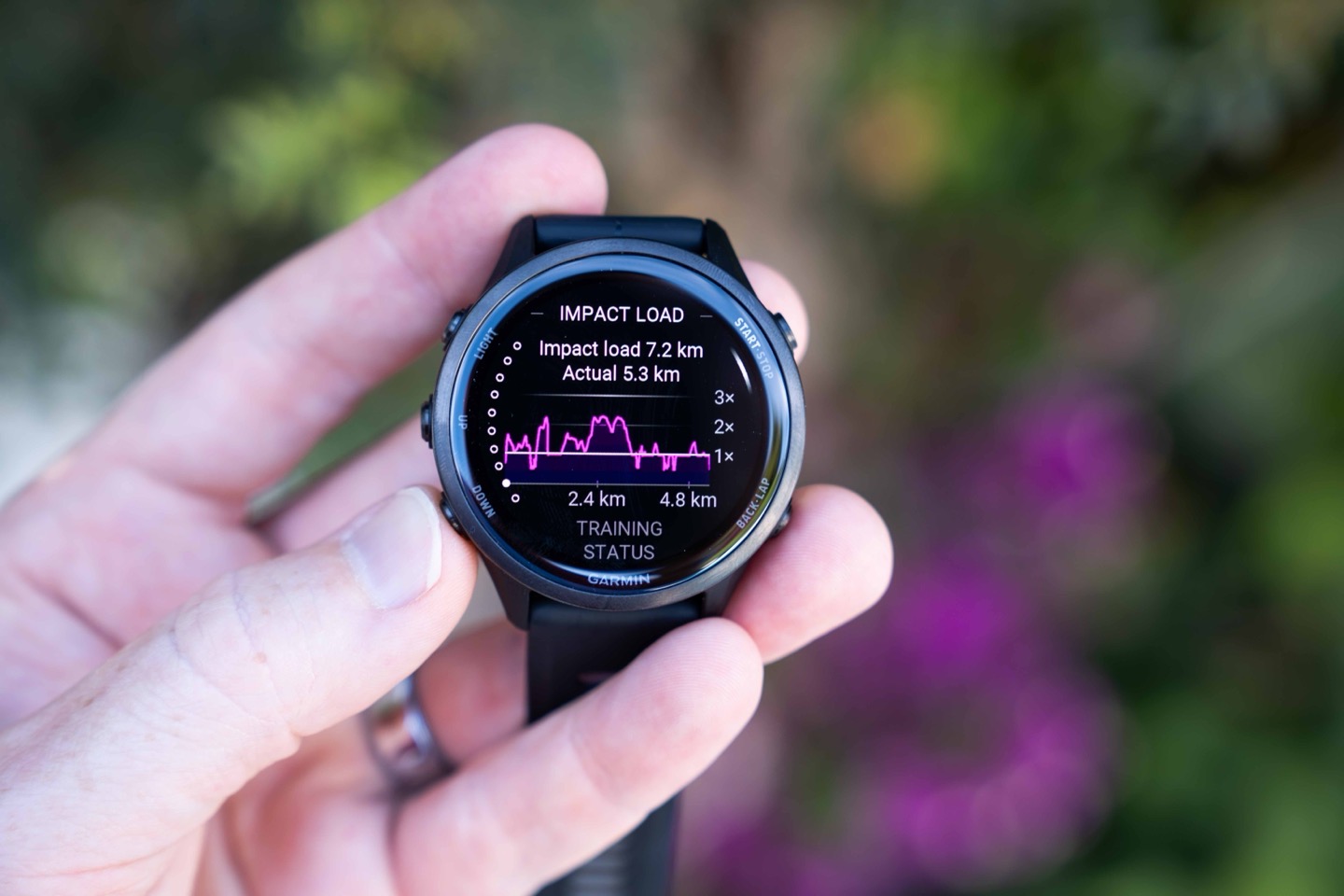
Here’s how the elevation impacted each portion:

Diving a bit more into the running features is the new Running Economy feature. This widget is only available with the also-new HRM 600 (which will set you back an astonish $169!!!). This will look at your efficiency during running, including the step-speed loss, which evaluates how much your speed slows down when your foot impacts the ground. If you don’t have that strap’s data coming in, this is what it’ll show:
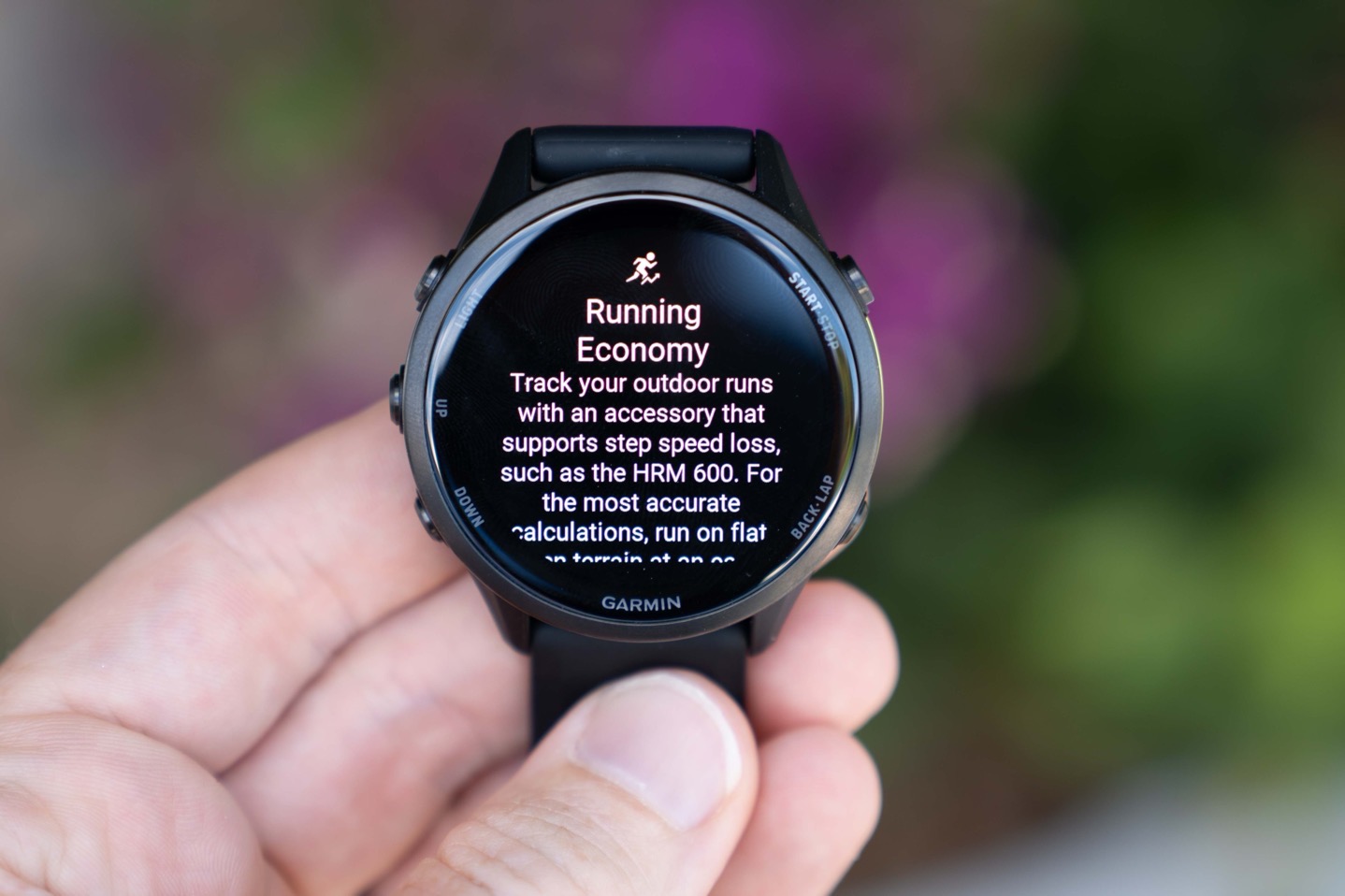
Whereas, once you do have data from the HRM 600, you’ll get more data shown after you’ve completed a number of runs, preferably flatter ones. And with that HRM 600, you’ll see the new Step Speed Loss data as well:

Speaking of Step Speed Loss, that’s one of the new metrics to Garmin entirely. You’ll see those in the watch during the workout (and see it shifting as you go up.down hills), as well as afterwards.
Next, there’s the new smartwatch features, starting with the speaker and microphone, like we saw on the Fenix 8 & Venu 3. This brings with it the ability to take calls, as long as your cell phone is within Bluetooth range. There’s no cellular in the Forerunner 970.
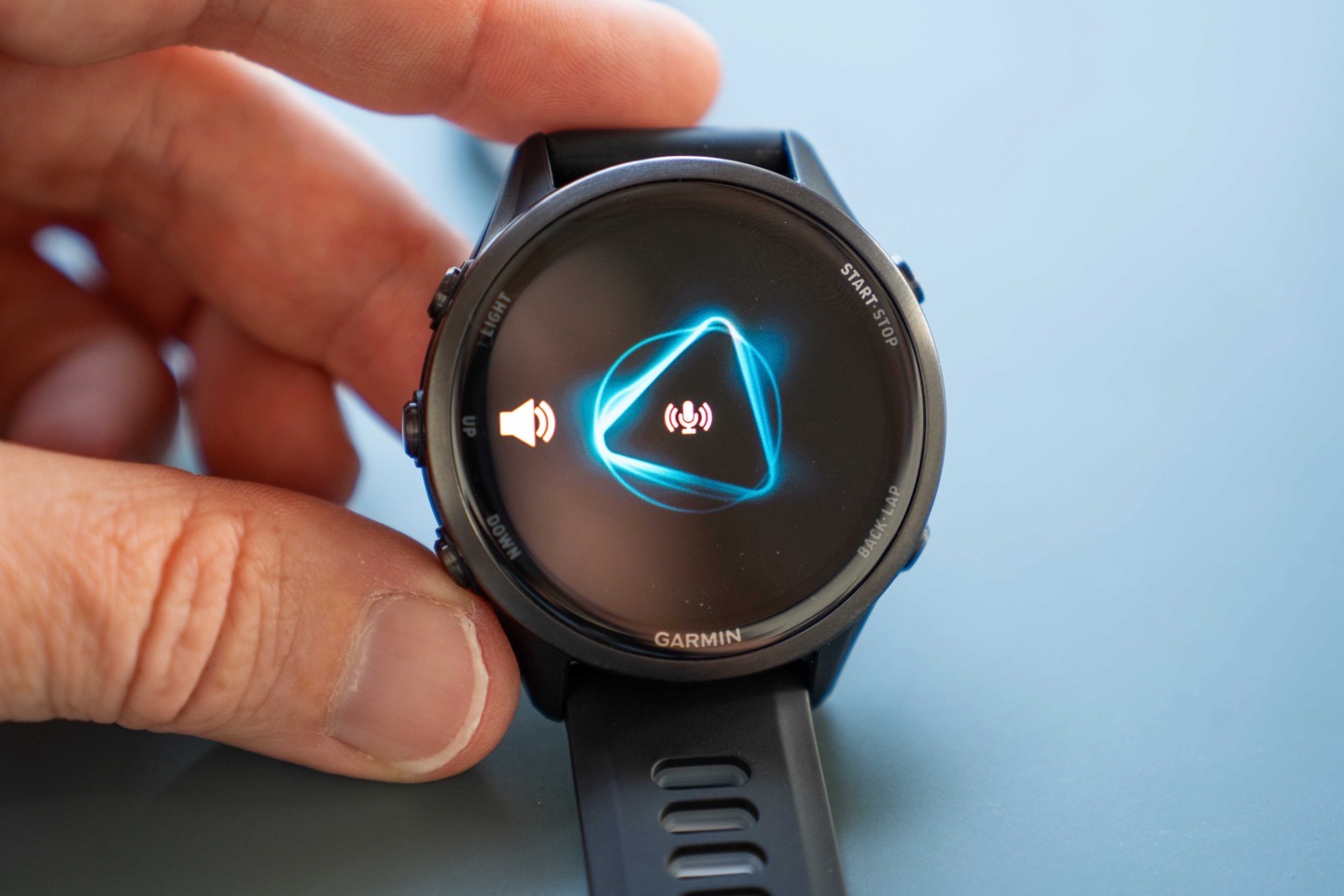
This also lets you access your phone’s voice assistance (e.g. Siri on Apple Watches, Google Assistance on Android, and Bixby on Samsung phones). Either way, to access this, you’ll configure a hot key (in my case, upper right) for a long hold, and then it’ll audibly return your queries.
Lastly, there’s the ECG function, which you’ll need to activate with the Garmin Connect app first (by doing a quick onboarding process that confirms you understand it does not detect heart attacks), then you’re good to go. As with before, you can save these and then share them with a doctor via PDF.
Wrap-Up:
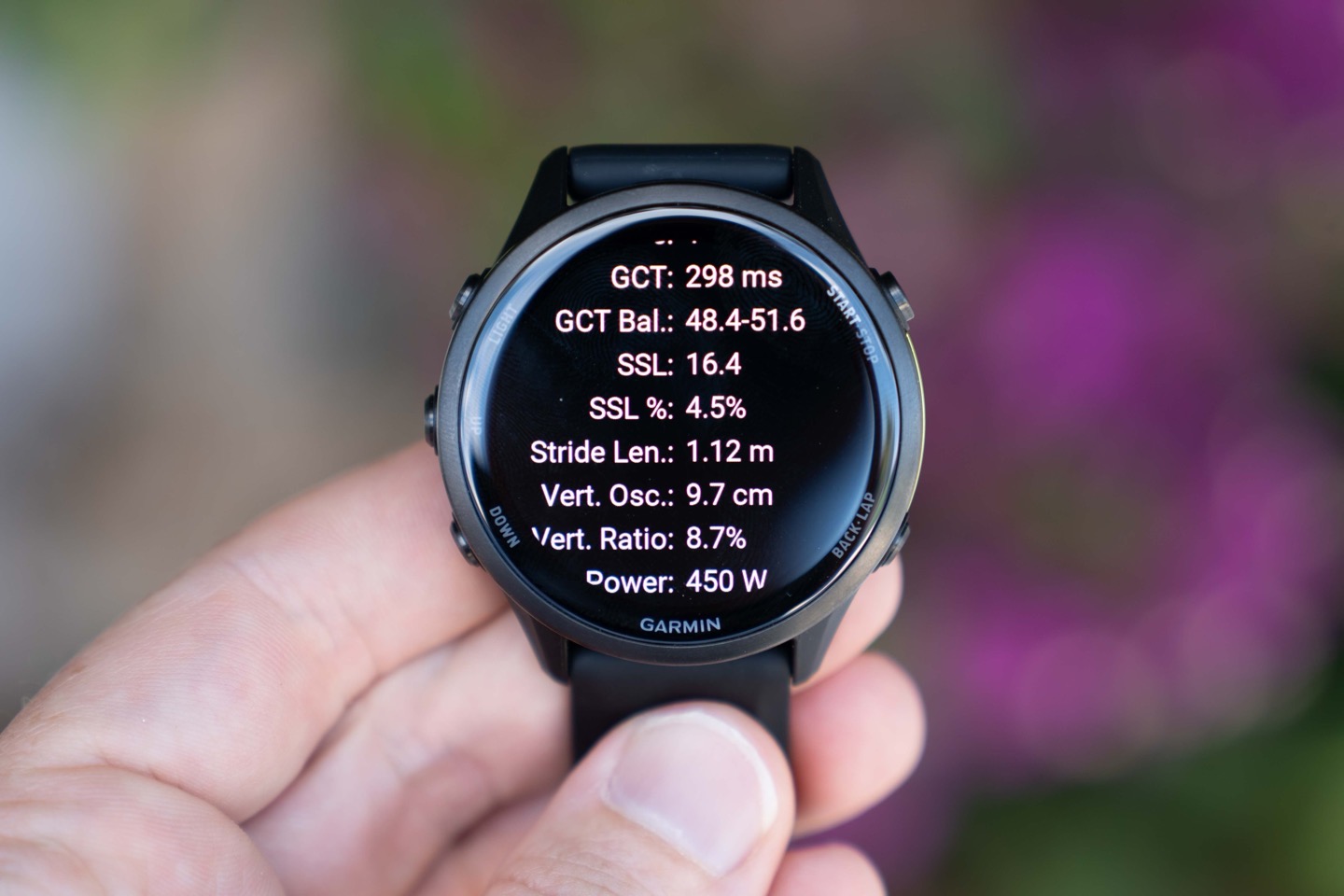
Obviously, lots to unpack here with the new Forerunner 970. With the price increase, it’s certainly creeping closer and closer to the Fenix 8 pricing (which starts at $999), so essentially you’re looking at a $200 difference to add in more features including diving support, extended microphone features, and a bunch of other navigation related items. Plus of course more screen sizes and bigger batteries I’ll be doing a full comparison between these soon.
In the meantime, it seems like Garmin listened when folks (including me) were disappointed with the Fenix 8 launch lacking much in the way of sports features (and by ‘much’, I mean any new features exciting diving). This time around, there’s a pile of new running features, expanded battery life for GPS modes, more sport modes, flashlight, and plenty of other more practical things people have been asking for.
About the only thing people didn’t ask for is that price increase. Welcome to 2025, I guess?
With that, plenty more to come in the coming weeks, thanks for reading!

0 Commentaires